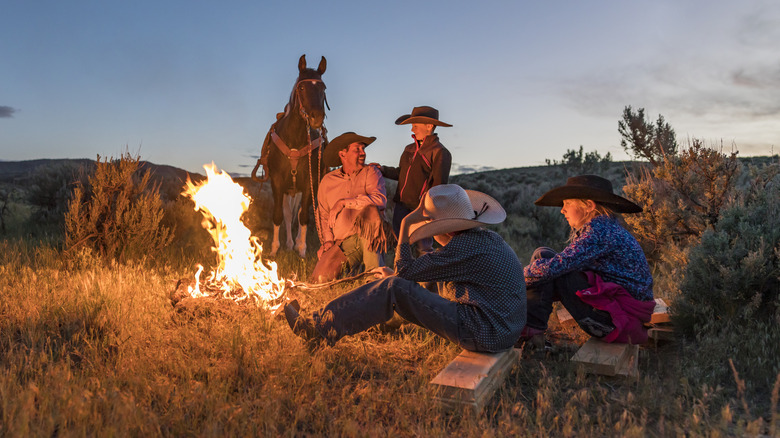The Rise of Cowboy Camping and What It Signifies

What is Cowboy Camping?
Camping today has evolved into a wide range of experiences, from luxurious RV getaways to cozy yurt-style tents with string lights and coffee from a French press. While there’s no single right way to camp, some adventurers seek the most authentic experience by going back to basics. This is where cowboy camping comes in.
Cowboy camping refers to sleeping under the open sky without any shelter between you and the night. It harks back to the days of the Old West, when cowboys would rest on the ground using just blankets or a bedroll for comfort. However, this doesn’t mean sleeping directly on the hard ground with no protection. Modern cowboy campers still use essential gear to stay safe and comfortable.
To enjoy cowboy camping successfully, you’ll need a few key items. A sleeping bag or warm blankets are essential, along with a sleeping pad and a groundsheet. Many campers prefer a tarp or even a tent in case of unexpected rain. Tyvek is a popular choice for groundsheets because it's lightweight, durable, and affordable—often available in 3-by-7 foot sizes for around $20. For the sleeping pad, foam-filled options are usually preferred over inflatable ones to avoid the risk of punctures. If you bring a tarp, experienced campers suggest setting it up to protect against rain but not sleeping under it unless necessary. After all, the main appeal of cowboy camping is the unobstructed view of the starry sky.
Why Is Cowboy Camping Becoming Popular?
Cowboy camping has seen a surge in popularity, especially in 2024 and beyond. More people are embracing a simpler lifestyle and choosing to sleep under the stars. The experience of falling asleep beneath a blanket of stars and waking up with the sunrise offers a unique sense of connection with nature. There’s something magical about being fully immersed in the environment, hearing the sounds of the night, and feeling the rhythms of the world around you.
Many campers also appreciate the simplicity of cowboy camping. It minimizes gear, making packing easier and reducing the weight you carry during hikes. Setup and breakdown are quick, which is ideal for multi-day adventures. You also avoid the hassle of parking an RV, pitching a tent in strong winds, or dealing with the challenges of rooftop tents. Plus, the reduced amount of gear often makes cowboy camping more affordable than traditional tent or RV camping.
Where to Try Cowboy Camping
While cowboy camping may sound like it means sleeping anywhere, it’s best to choose locations that offer favorable conditions. Areas with little rainfall are ideal, such as the deserts of the Southwest and California. These regions provide clear skies perfect for stargazing and reduce the chance of getting caught in unexpected rain. They’re also less buggy, making for a more peaceful night’s sleep.
If you're not near a desert, consider using a bivouac (bivy) sack. This lightweight, waterproof cover slips over your sleeping bag and can include a mesh hood for visibility. While some purists argue that using a bivy isn't true cowboy camping, it can still allow you to enjoy the experience while staying protected from the elements.
For those looking to find the best spots, there are resources that highlight top U.S. campsites known for their stunning views of the night sky. Whether you're in a desert or a different climate, there are ways to enjoy the beauty of cowboy camping with the right preparation.
Post a Comment for "The Rise of Cowboy Camping and What It Signifies"
Post a Comment